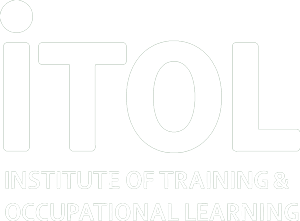You already know that effectively managing your training team is critical if you are to have a positive impact on the organisation.
Strategic growth begins with developing a team that is strong, co-operative and productive, because business growth is primarily about people growth:
“You won’t build a top-tier training function without paying attention to the training professionals you’re creating it with”.
If your people fail, you will too, if they succeed, the entire L&D department will climb up the business ladder, supported by their hands.
Think over the following question: Who is responsible for managing the HR function at your organization? If your unequivocal answer is “the HR department, only” I have some bad news for you. It seems that you don’t follow one of the not-so-recent management trends: strategic HR management.
Strategic HR management is a term designed to highlight the importance of soft skills in business development. The somewhat derogatory term “soft skills” hints that these skills are less necessary than “hard” ones: as if a college degree or technical knowledge is much more helpful in business management than empathy, planning, time management or plenty of other uncertified abilities that are essential to training, and business success. The term “soft skills” is a bit of a misnomer, they could easily be referred to as “core cultural skills.” Soft skills are universally recognized as essential for building a productive working atmosphere and driving business growth.
As long as you are leading your training function and helping your organisation grow, developing strategic HR management skills will position your for success. Consider these five HR skills that all training leaders should develop.
- Be People-Centric
Learning leaders dedicated to helping both their people and training function succeed will always balance collective and individual goals. Suppose you are paying attention to the business results only, without considering personal gains and pains your team may experience in pursuit of those results. In this case, your team will likely build resentment that remains unnoticed until a series of issues arise due to stress or burnout. How can you create an efficient training team that achieves results while ensuring they are supported?
First of all, listen. Active listening and empathy are two crucial elements of efficient communication. Without empathy, you will face insurmountable difficulties in supporting team spirit, engagement and a sense of belonging. Additionally, without empathy and active listening, you can’t be sure that your training team members won’t fall behind (or resign) in the most inopportune moment.
- Learn to Manage Organizational Change
There’s no escaping the fact that every organisation faces structural change either voluntary (aimed at supporting growth) or forced (caused by improper management or business failures).
Effective learning leaders must be at the forefront of organisational change, understanding their impact on people’s lives. Try to explain structural changes to your team members beforehand to mitigate the undesired outcomes and advocate for your team members. As a leader, you should primarily demonstrate support for your training team and offer care in the hour of need.
- Build a Winning Team right from the ‘Get-Go’
Ineffective leaders never spare time to get to know their team as a working body and as a set of distinct individuals. Firm foundations are laid from the start the selection process and are continuously built by asking your training team members about themselves, maintain the effective feedback process and create interpersonal bonds. Lastly, work to understand more about their career goals so that you can support them along the way.
- Explain, and Don’t be a Know-All
If I asked you, “What is the job of a football player?” would you say that it’s to attend practices, pass the ball to their teammates and attempt to score goals? Of course not, says Julie Zhuo, Facebook’s vice president of product design, in her book “Making of a Manager.” You’d tell me why those activities matter in the first place. You’d say, The job of a football player is to win games.
Be upfront with people about the kind of relationship you’d like to build and the type of learning leader you want to be. This will help your training team conquer new professional heights and win more games. Never fall into the trap of making yourself a “know-it-all” just because you are the Team Leader. This approach negates all the possible interpersonal empathy and strips your relationships of their emotional component. No one wants to establish emotional bonds with such a leader.
- Don’t Neglect Weekly 1:1 Meetings
“90 minutes of your time can enhance the quality of your team’s work for two weeks or some 80+ hours,” writes Andy Grove, the author of “High Output Management”, about one-on-ones. A good working strategy is to implement one-one-one meetings weekly with your team members.
It’s also important to schedule weekly free slots on your calendar for spontaneous consultations with your team members. Such flexibility will surely pay off. Treat them as impromptu sessions but never come unprepared. The core 1:1 discussion scheme includes plans, both ideal and tangible results, and possible obstacles on the way
Marc Hedlund, senior director of engineering at MailChimp, says, “Regular 1:1s are like oil changes in your car; if you skip them, your going to get stranded on the side of the road at the worst possible time.” The takeaway is clear: If you want to avoid unpleasant surprises, arrange timely check-ins with your team members.
Conclusion:
All in all, the path of every leader is marked by a set of challenges. Some of them are desirable, some are not. By developing a strategic HR skill set, you can better navigate them and set your training team, and entire organisation, up for success.

